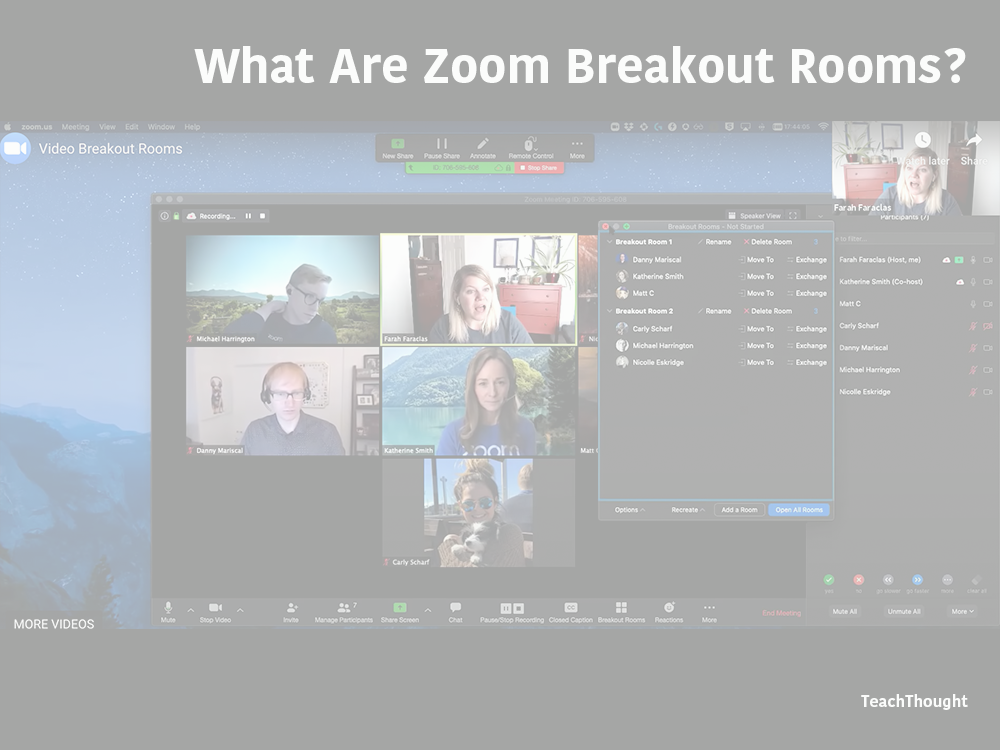

This provides a space to capture each group’s responses in one accessible location. It also allows all participants to contribute to a single document simultaneously. If you have provided the class with a collaborative Google Doc, OneNote workbook or editable page in Canvas or UTSOnline wiki page, you can ask students to give feedback or respond directly to questions in one of those spaces. Ask a student to save or copy the chat prior to leaving the breakout room so they can share it with the class in the main room. This makes it a good tool for summarising the group’s ideas.

When in a breakout room, only the students in that room are able to see anything typed in the chat. This can be done in a number of ways: Verbal responseĪ verbal response requires minimal set up time. Remember to explain to students what exactly they should talk about and how long you expect them to talk for. Once a breakout room session has ended, students should always be asked to report to the main meeting room by giving feedback, summarising their discussion or presenting their work (ideally by a nominated speaker in the group). Zoom will then give participants one minute to leave breakout rooms and come back to the main room. Then, one minute later, manually close the groups. Alternatively, you can broadcast a two-minute warning to all groups letting students know it’s time to wrap up.
Zoom breakout rooms ideas update#
Broadcast a message to all breakout rooms to update students with relevant information, or remind them about their task.You can manually move between breakout rooms to check student progress by clicking the ‘Join’ text in your breakout rooms list:.Ensure students have continued access to activity instructions, discussion prompts and relevant learning materials while they are in a breakout room (via a Google Doc, downloadable Word document, shared OneNote notebook, or a page in Canvas or UTSOnline) as without these group activities will not be productive.Once you have started your breakout rooms you can monitor and engage with students with techniques similar to those you would use during face-to-face classes, such as by joining each breakout room in turn. ask them to begin by introducing themselves and to tell each other 1 thing they have learned or found particularly useful from the tutorial so far). Consider providing some icebreaker activities in the instructions to students to get them started (eg.More general roles could include discussion leader, library/database/Google researcher, note taker and findings presenter. For example, in a project based learning task, these roles could be a project manager, designer, analyst and developer. Rotate these roles around each time you start breakout rooms. Consider assigning roles to group members to help with organisation.“In this 15 minute breakout session, spend 5 minutes discussing ideas you will have 5 minutes to discuss problems with a tutor when they join your breakout room finish by spending the last 5 minutes coming up with a solution note your solutions in the space below”). Prior to them leaving your main room, provide students with a Google Doc with a clear plan for them to follow when they enter breakout rooms (eg.Think about your role as the instructor – periodically join each breakout room to monitor discussions and to stimulate discussion if groups are having difficulties.Recommended group size should be between two and five to ensure everyone has a chance to contribute. Consider the size of the groups, activities and duration of the breakout rooms.Determine whether breakout rooms would prove useful for your session by taking into consideration the time available, possible activities and your class size.Here are some things to consider before you conduct a breakout room activity: Planning is required to ensure students participate in structured, focused and productive discussions and activities.

Instead, these tools are available inside each separate breakout room and are accessible only to the students in that room.īreakout rooms can be very effective spaces for student group collaboration, provided that students have explicit instructions. When students join a breakout room, they will no longer have direct access to materials from the main Zoom meeting room, including the chat, screenshare, video, and audio.


 0 kommentar(er)
0 kommentar(er)
